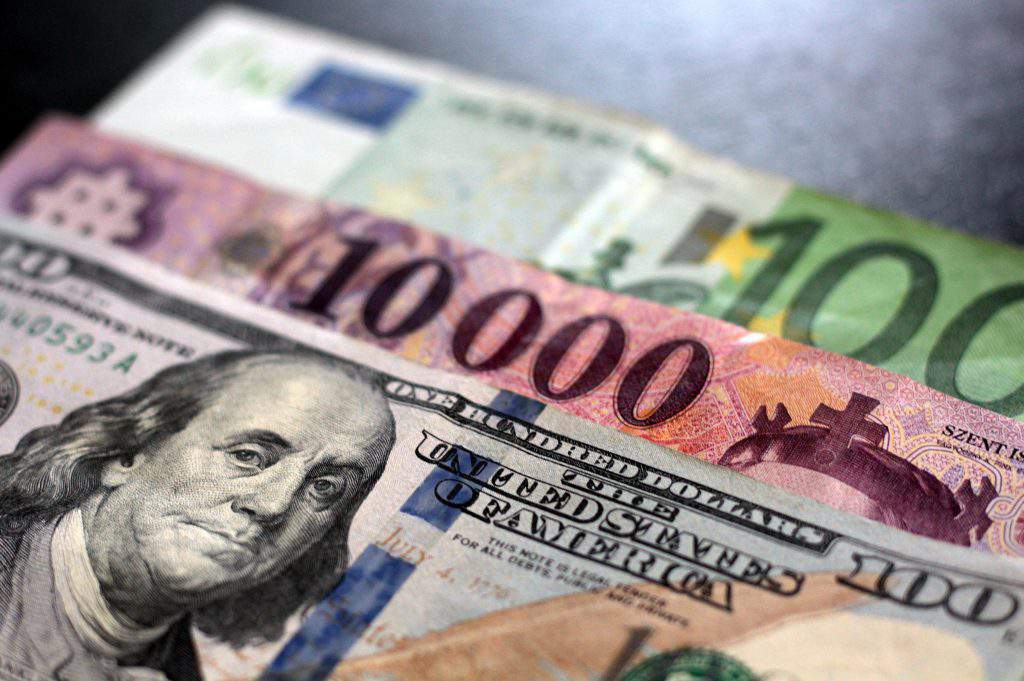Something’s up: Why the US dollar no longer predicts the Hungarian forint’s movements

In recent years, the relationship between the US dollar and the Hungarian forint has undergone a significant transformation, challenging long-held assumptions in currency markets.
Traditionally, the dollar’s movements served as a reliable indicator of global risk sentiment, with investors often turning to the dollar as a safe haven during periods of uncertainty. This pattern also provided valuable insights for predicting trends in the forint market, as a strengthening dollar typically coincided with a weakening forint against the euro.
Something went wrong with the US dollar
According to Portfolio, however, this dynamic has changed dramatically, particularly since the presidency of Donald Trump. The US’s unpredictable economic policies, the use of tariffs as economic weapons, and growing concerns over the sustainability of American public debt have all contributed to a shift in global capital flows. Foreign investors, once eager to hold US assets, are now gradually reducing their positions, leading to a situation where capital movements have a greater impact on the dollar’s exchange rate than traditional risk sentiment.

Dollar index no longer reliable
The result is a much weaker, sometimes even negative, correlation between the dollar index and the EUR/HUF exchange rate. In the past, a rising dollar index would almost invariably signal a weakening forint, but recent months have seen this relationship break down. There are now frequent instances where the Hungarian forint strengthens even as the dollar weakens, and vice versa.
This decoupling means that the dollar index is no longer a reliable tool for gauging risk appetite or for predicting the forint’s direction.
Given this new reality, market participants are turning to alternative indicators that are more closely tied to the Hungarian forint and less influenced by US-specific factors. The performance of the German stock market (DAX) and the yield on German 10-year government bonds have emerged as key metrics. Typically, a decline in the DAX or German bond yields signals increased risk aversion, which tends to weaken the forint against the euro. This pattern has held true in recent weeks, as heightened uncertainty has pushed the Hungarian forint lower.
European risk indicators likely to replace the US dollar
Looking ahead, unless the US resolves its internal economic and political uncertainties, European risk indicators are likely to remain more relevant for interpreting the forint’s market position. The ongoing volatility in global markets, exacerbated by Trump-era policies, suggests that the Hungarian forint may continue to face downward pressure against the euro. For now, the era when the dollar’s movements could reliably predict the forint’s fate appears to be over.
The USD/HUF exchange rate has fluctuated between a high of about 402 and a low of 360 over the past 90 days, with a notable decline of over 10% in this period.
Exchange rates as of 5 PM, 15 April 2025:
- EUR/HUF: 408.20
- USD/HUF: 360.79
If you wish to read more news on the Hungarian currency, click HERE. If you’d rather read about US-Hungary relations, THIS is your place to go.
Read also:






The repatriation of foreign funds from the US caused by the disasterous tariff war of the Trump Administration is a huge issue. Central banks including China’s have been divesting themselves from US treasury bills and purchasing gold for some time before Trump came into office. In the last couple of weeks there has been a stampede out of USD which is the reverse of what would normally happen in a time of great economic uncertainty and crisis. Gold has taken the dollar’s place as the go to place as a safe haven asset. The US must turn over one third of its’ entire federal debt over the next year and things aren’t looking too good if no one wants your currency. How do you cut rates to stimulate the economy when tariffs cause an economic slowdown but are inflationary ? Trump is now hitting the panic button saying the termination of Fed Reserve Chairman Jerome Powell cannot come fast enough. It’s all economic ruin caused by the worst president in US history.